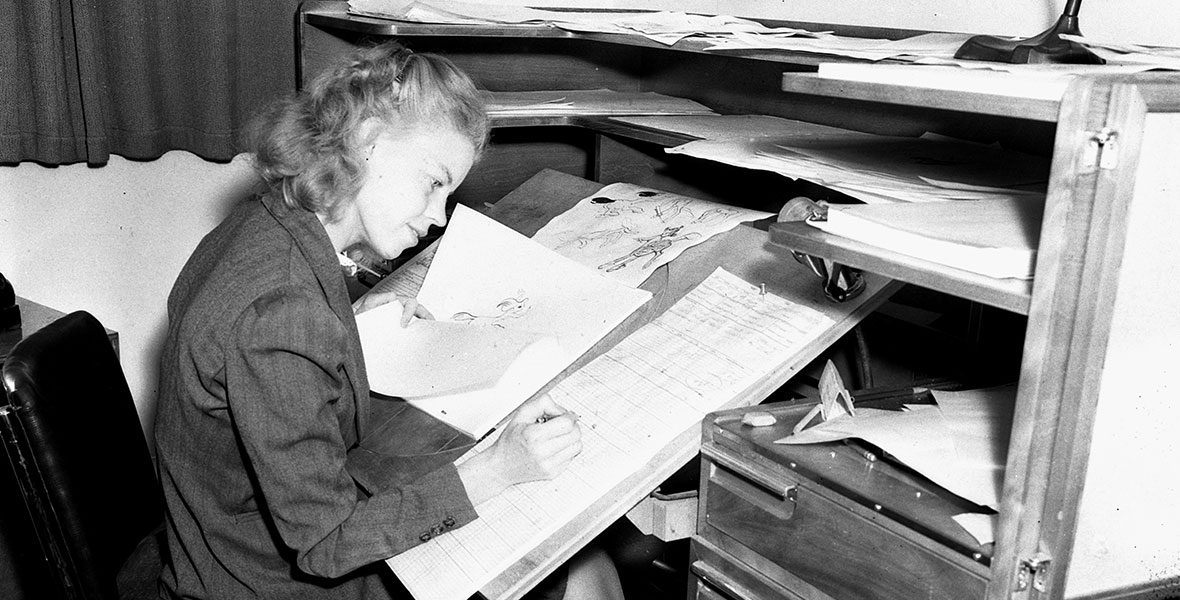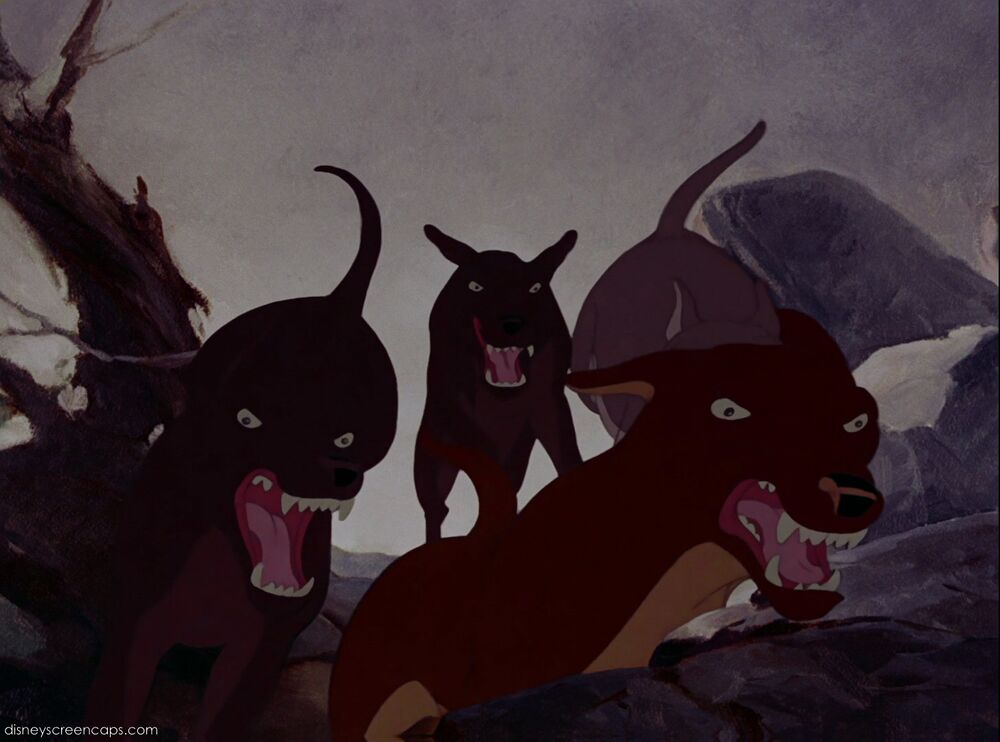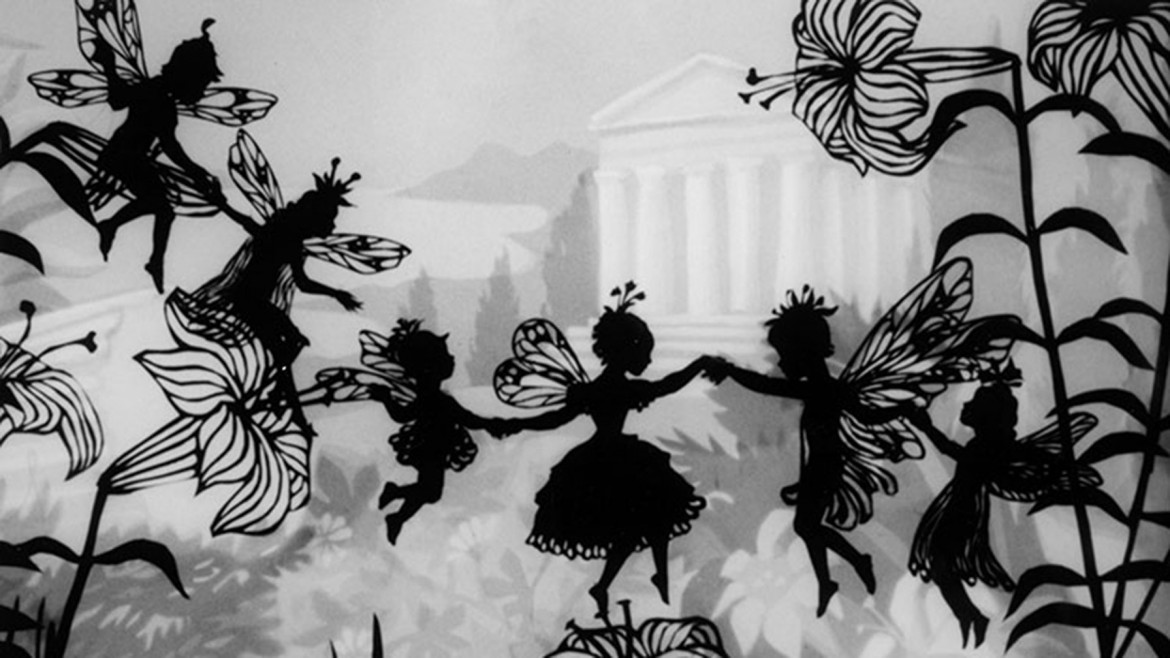My name is Caro Holden, and I am a student studying Creative Writing at Truman State University. All my life I have enjoyed watching cartoons and animated films. There’s something about this genre that allows for a more elastic creativity in a way that live action can’t quite tap into. This semester, I have a chance to look even closer at animation and, more specifically, the women behind animated shows and films. In the past few years, only 3% of animated films were directed by women. While this statistic is a little discouraging for women aspiring to enter this field, I will use this platform to celebrate the women who have successfully infiltrated the industry. Their films are important for creative women everywhere, and their influence should be honored.
Conclusion
Before I started this project, I knew very little about women in the animation industry. I was familiar with the types of animation, animation studios, and some specific animators (all of whom were men), but the women who work in this field seemed more hidden from view. It took actual research and reading for me to become more familiar with these women and what they have done.
I think my lack of knowledge about women in animation comes from their historic oppression and the continued effects of that. A couple of the women I researched (Lotte Reiniger and Retta Scott) were pioneers in their field. They took jobs animating that were previously unavailable to women in the early 20th century. Their influential work happened just under 100 years ago, and since then more women have been able to have successful careers in animation.
Still, there are significantly far fewer women in the industry than men. Most of the well-known animated films are directed by men, and many of the women who do work on these films so concept art and storyboarding. While these types of jobs are important, I think there still need to be more opportunities for women to direct animated films.
Of the women-directed films that I watched for this project, most of them featured a diverse set of characters and settings. All of them were well made and beautiful to watch. I think if more women directed animated films, there would be more diversity in the industry as a result. Many different stories from different cultures and backgrounds would be told. This is already happening as women become more successful and prominent in the industry.
Most importantly, something I already knew was reinforced in this project: women are very capable of creating amazing art and telling original stories. I look forward to seeing animated films in the future made by creative and pioneering women in the animation industry.
Retta Scott

Retta Scott was an animator in the 30’s and 40’s in 2D animation at Walt Disney Studios. She was born Omak, Washington but attended high school in Seattle. After graduating, she received multiple scholarships, one from the Seattle Art & Music Foundation. She also received a scholarship to attend the Chouinard Art Institute, so she moved to Los Angeles where she would sketch the animals at the Griffith Park Zoo.
Because she was so talented at drawing animals, CAI director Vern Caldwell urged her to work at Walt Disney Studios on the ongoing project Bambi. At first, she refused because she wasn’t interested in previous films they had done. In spite of this, she ended up joining the company in 1938 to work on the project.
Scott worked hard for weeks storyboarding Bambi, his mother, and the hunter’s dogs. The faces of these dogs appeared so vicious and mean-looking that many other artists in the company were stunned. Some assumed only men could create such technical and intense art.

Image from Disneyscreencaps.com
Because of her skill, Scott was asked to help with the actual animation of these characters for the film. She studied under animator Eric Larson, which was unusual for the time. Women in 1930s-era animation were typically assigned routine tasks like ink and paint art. Scott’s success as a storyboard artist had propelled her into territory largely unavailable to women at the time.
Though she had achieved a high status, she and her art still went under appreciated. Instead, Mary Blair (another early female Disney animator), became more popular and revered for her pioneering in the industry. Though both Blair and Scott are amazing artist and worked hard to allow women to pursue jobs in animation after them, Scott’s name fell faster into oblivion than Blair’s. Scott, however, did have something to brag about: she was the very first woman to be credited as an animator on a Disney film.
Later, Scott would help animate Dumbo and Fantasia. She continued to do what she loved for many years until her retirement in 1946. After her death, Disney awarded her a Disney Legend’s Award for her contributions in the field of animation.
Sources are embedded as links in the article
Nora Twomey and The Breadwinner

Nora Twomey
Nora Twomey is an Irish animator, director, screenwriter, and voice actress. She partly owns Cartoon Saloon, which is an animation studio in Ireland. Some of her more well known films are The Secret of Kells and The Breadwinner. Before attending Ballyfermont College, she actually worked in a factory doing manual labor. After graduating, she took a job at Brown Bag Films animation studio. Shortly after, she co-founded Cartoon Saloon, where she made her first award winning short film From Darkness.
Before she went on to direct The Breadwinner, she co-directed both The Secret of Kells and Song of the Sea with Tomm Moore which were highly successful. The Breadwinner, which she directed in 2017 and was the first film in which she had sole director credit on.
This film was actually based on a best-selling children’s book by Canadian author Deborah Ellis. The book, published in 2000 details the life of an Afghan girl who finds herself the sole provider for her family after her father is arrested in the wake of the Taliban era in Afghanistan. She dresses as a man in order to keep her family safe.
/cdn.vox-cdn.com/uploads/chorus_image/image/57968901/BW_image1.0.jpg)
Twomey didn’t change much about the plot of the book as she made her film adaption. She keeps the characters, setting, and main issue. In the end, her father is reunited with the family, but not before many of the main characters witness and experience traumatizing events. Though it is a movie for children, it depicts heavy topics like war, family separation, public execution, and death.
The film’s style is characteristic of Twomey. She often writes coming-of-age films where protagonists deal with mythical surroundings. Characters are often looking for family and community. These themes can plainly be seen in The Breadwinner as the protagonist longs to reunite her family and live in a stable environment.
It is important to note the cultural significance of this movie, as well as the book. It is worth pointing out that the author of the novel is a white Canadian woman. Ellis spent 7 months engaging with women in refugee camps in Pakistan in order to write her book. However, 7 months may not be a long enough time to accurately capture an entire culture and their experiences. As Twomey adapted her film, she did make sure to be as culturally sensitive as possible. Being a white woman herself, she understood that she has cultural limitations when it comes to her understanding of Afghanistan and the people who live there. All of her characters are voiced by Middle Eastern women, and her film score is accompanied by a young girls choir from the Afghanistan National Institution of Music. These additions certainly help the accuracy of the film, which brings up culturally important and diverse topics.
Sources appear as embedded links
Lotte Reiniger

taken from here
Lotte Reiniger is one of the most pioneering women animation has ever seen. She was born in Germany in 1899. As a child, she was fascinated by the Chinese art of paper cutting and silhouette puppetry. Young Reiniger would often put on puppet shows for her family. When she was older, her love for cinema developed even more as she discovered her interest in special effects, eventually joining a theatre group called Theatre of Max Reinhardt. Here, she made costumes and elaborate title cards for films, getting her further involved in film making.
In 1918, Reiniger was admitted into the Institut für Kulturforschung (Institute for Cultural Research), an experimental animation and short film studio. The first film she directed there helped give her more opportunities to make bigger, more intensive projects. It was a short film about two lovers called Das Ornament des verliebten Herzens, and it was very well received. In the next six year there, she would go on to direct five more films, all using her signature silhouette animation style.
Silhouette animation is an animation style in which characters are only portrayed as black silhouettes. Backlighting is used to make paper cutouts appear visible and standout from the background. Reiniger was not the first to use this style in her work, but she was arguably one of the best at the technique. Silhouette animation is inspired by European shadowplay and European silhouette cutting. British film maker, Charles Armstrong, used this technique, but very few of his films have survived to present day. It is likely that Reiniger didn’t even know of him when she perfected her animation style.

With this style, it is particularly difficult to portray characters’ facial expressions. At the time when Reiniger was making her films, movies relied heavily on facial expressions to convey emotion. She had to use posture and gestures to convey her characters’ emotions, which set her films apart from other films of the time. Her characters are also not always biologically correct. This gives them a whimsical, surreal look that fits nicely with her fairytale-themed films.
Reiniger passed in 1981. Her body of work is still lauded today as incredible pioneering in the animation industry, and it inspired many artists after her. Fantasia and A Series of Unfortunate Events have both paid homage to her legacy. Though she is gone, her work still lives on and her influence is evident.
Domee Shi

Domee Shi is a Chinese-born Canadian Pixar storyboard artist and director. She worked on Inside Out (2015), Incredibles 2 (2018), and Toy Story 4 (2019). She also directed the 2018 Pixar short Bao, which won an Academy Award for Best Short Film that year. She was the first woman to direct a short film for Pixar.
Shi’s father was a huge influence on her artistic career. She learned a lot about the arts, as he was a college professor of fine arts and also a landscape painter in China. She grew up watching Disney animated films, as well as Studio Ghibli films which exposed her to Asian cinema and animation. In high school, her love of anime led her to Vice President of her school’s anime club. Shi attended Sheridan College where she studied animation and developed a love for storyboarding.
Shi began her career at Pixar with a 3 month internship. She was initially turned down by other major animation studios like Disney and Dreamworks. At, she worked on Inside Out and created storyboards for Incredibles 2.
Originally, Bao was just a creative side project for Shi until it was approved in 2015. Her inspiration for the film came from her mother who she says “was always making sure I never wandered away too far, that I was safe”. She was the only child to parents who wanted most of all to protect her. Also, Shi speaks of her love of creating stories involving food. These elements combined led to Bao.

Domee Shi emphasizes the importance of telling stories about different cultures. The importance of Bao is that it tell the story of an Asian family, complete with culturally accurate food and characters. Stories like these are becoming more common, especially in animation. Thanks to Domee Shi, we have films that represent POC, and hopefully will have more in the future as she continues to create her art.
Sources: Wikipedia
Director Brenda Chapman

As far as recognition goes, Brenda Chapman has been awarded many “firsts”. She is both the first woman to direct an animated film for a major studio (The Prince of Egypt) and the first woman to win the Academy Award for Best Animated Film (Brave). Her journey began at Lincoln College where she studied art and continued into grad school. Chapman received a BFA in character animation from California Institute of the Arts which allowed her to work as a story trainee for Disney. Chapman would later claim another “first” — the first women to serve as Head of Story for an animated film, The Lion King.
As Chapman began working for Pixar, she conceived Brave and was announced as its director. However, she was replaced by director Marc Andrews after “creative disagreements”. Chapman ended up leaving Pixar stating “That door is closed. I made the right decision to leave and firmly closed that door. I have no desire to go back there. The atmosphere and the leadership doesn’t fit well with me.” While she was lauded as the first woman to direct an animated film for this project, Andrews ended up receiving the Oscar for Brave.
This part of Chapman’s career stands to highlight how difficult it is in the animation industry — especially for women. Though the idea for Brave belonged to her, Chapman was not officially recognized or awarded for it. Furthermore, though she was no longer director of the film, she was not able to work for another studio until Brave was released. Chapman admits this waiting period was difficult. She states that the ordeal taught her to never share her ideas with a studio without explicitly asking for ownership in the project.
The industry can be cutthroat for both men and women. However, with there being so few women working on animation projects already, experiences like Chapman’s can push them out even further. While I cannot say that her replacement as director had anything to do with her gender, it certainly didn’t accomplish anything for other women seeking a career in the animation industry.
Chapman still works in the industry, though. Dreamworks (where she worked on The Prince of Egypt called her back for more creative projects. She worked on a film called Rumblewick which was lauded as “funny with magic and heart”. Though her career hasn’t been the easiest, Chapman continues to do what she loves — create beautiful movies for young and old alike.
Note: sources are embedded in the article